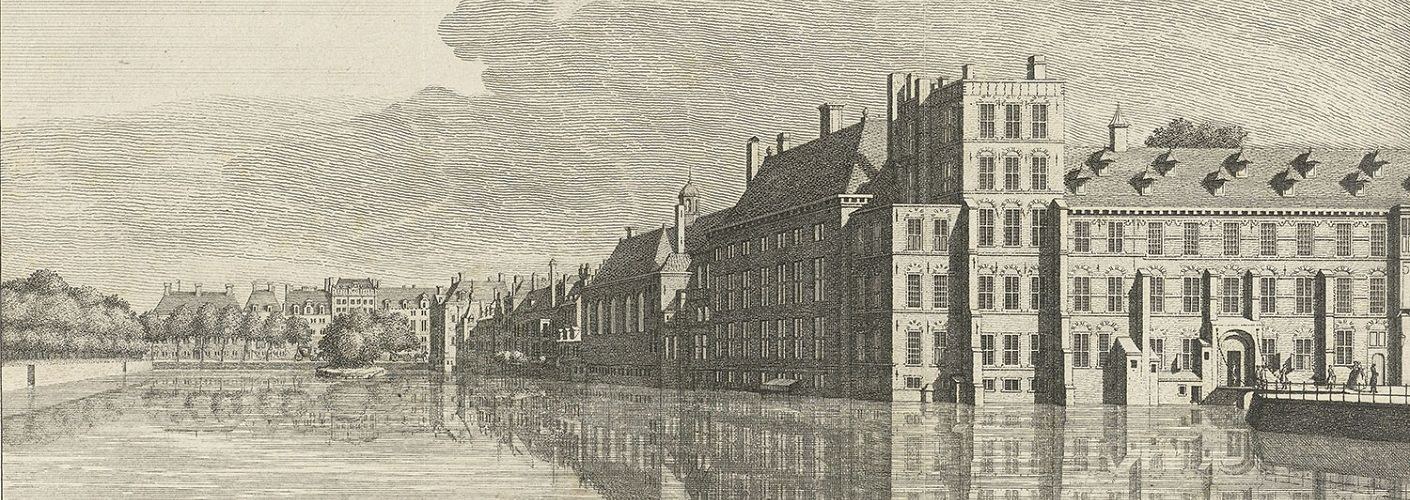Visitors come to the Prison Gate to wonder at how people were tortured and punished in the past. From the mid-sixteenth century, the Prison Gate was mainly a courthouse for the Court of Holland. The law of that time cannot be compared to the law of today. It developed in parallel with the history of the Prison Gate as a building, with the Court of Holland, once established by the Treaty (or reconciliation) of Delft, playing a leading role.
Having to prove you were right
In the 14th century, when the Prison Gate was established, there was no legal system like the one we have today. Every city administered justice differently. There was no such thing as corporal punishment and only blasphemy was punishable by death. Law was still a matter for families between themselves; if someone set another’s house on fire, for example, he had to pay them twice the value of the house and the lost goods. In cases of theft, murder or manslaughter, the complainant and the defendant were themselves responsible for proving who was in the right. If the complainant failed to do so, he ran the risk of being punished himself. Someone was appointed to mediate such cases as a judge, though, to ensure that the proceedings were fair.
Revenge or general interest
As the influence of the Church grew, God increasingly played a role in criminal proceedings. It was thought that the accused would be able to endure torture if God aided him as the innocent party. Gradually, it became more and more important to investigate who was at fault. Witnesses and written acts became decisive forms of evidence. Self-interest, focused on achieving revenge and redress, became subordinate to the common good. Crimes were increasingly seen as a threat to public safety, peace and order. As such, they were crimes against the community. At the same time, with its harsh public punishments, the State established its social monopoly on the use of violence.
The Count of Holland transforms his Front Gate into the Prison Gate
In the 14th century, in order to safeguard the peace (and their power!), counts were assisted by ‘councillors’. The Count of Holland also had a council of advisors such as these. In 1428, this was transformed into a permanent council with nine members. This was a consequence of the Reconciliation of Delft of the same year: a peace treaty (reconciliation) between Jacoba of Bavaria, and Philip III, Duke of Burgundy. The treaty also settled the longstanding conflict known as the Hook and Cod Wars.
'The administration of justice increasingly became a governmental task.'
There was also growing demand for cells in which to hold the accused. In the same year of 1428, two cells were therefore built in the Front Gate (Voorpoort), one of the three outer gates of the castle on the Binnenhof. The Prison Gate had become a fact.
How the Court of Holland became the highest court in Holland
Around 1445, the council was split in two. One part set to work on the financial aspects of the administration, whereas the other dealt with the administration of justice. The latter part gradually became known as the Court of Holland. The Court dealt with serious crimes, cases from lower courts, and those of groups of people with special privileges: the nobility, employees of the Court of Holland, members of the clergy, widows and orphans, and foreigners. And political prisoners, such as Cornelis de Witt and Johan van Oldenbarnevelt.
Why the Prison Gate got its own courtroom
The Court’s sessions were originally held at the Binnenhof, in the Rolzaal or Roll Room. But it was inconvenient to keep taking the accused back and forth between the Prison Gate and the Binnenhof. For this reason, in 1540, the Court got a new courtroom in the Prison Gate: the Examineerkamer, or ‘examination room’, where the accused could be interrogated. Interrogations were known as ‘examinations’, hence the name. If the suspect did not give the answers that the judges wanted to hear and there were sufficient grounds for suspicion, the next step would be the ‘sharp interrogation’. In other words, torture in the torture room – for as long as it took for the suspect to confess.
Centuries later, the Supreme Court became the highest court in the Netherlands
From then onward, the Court of Holland was the highest legal authority in Holland. But it was also possible for the condemned to appeal against sentences from this Court, by taking them to the Great Council of Mechelen. From 1473, this was the highest court in the Burgundian Netherlands, to which Holland also belonged. Almost a century later, in 1581, the Northern Netherlands renounced the Spanish king, Philip II. A year later, these provinces jointly established their own, new court: the ‘Supreme Court of Holland, Zeeland and West Friesland’, also based in The Hague. Unsurprisingly, having such a multitude of courts frequently led to problems. After the annexation of the Netherlands into France, both the Court of Holland and the Supreme Court were abolished in 1811. This brought an end to the almost four-hundred-year history of the oldest law court in the Netherlands. Only in 1838 would the Supreme Court as we know it today be established as the highest court in the Netherlands.
